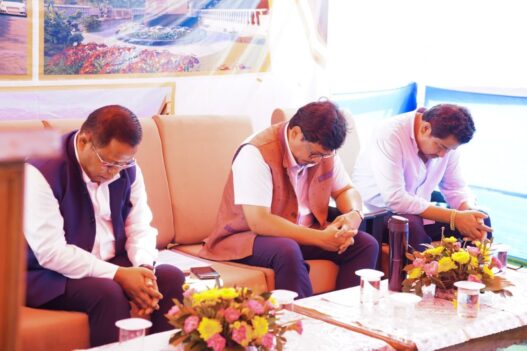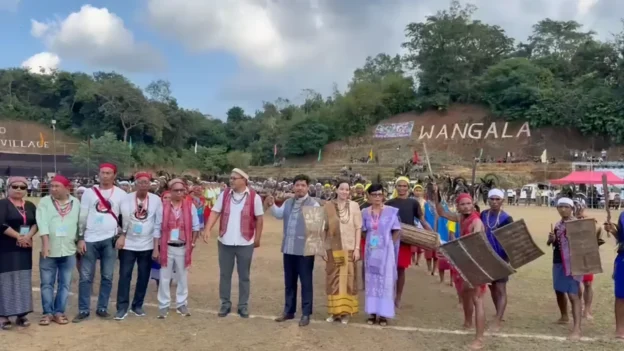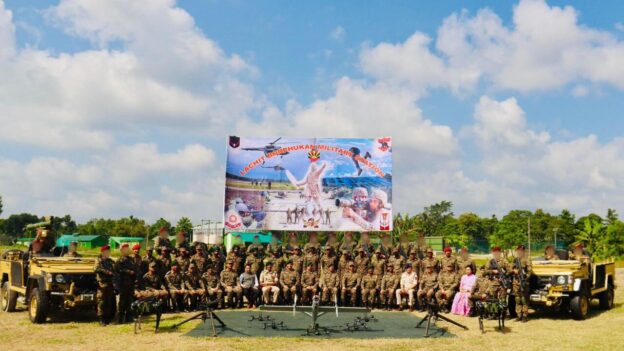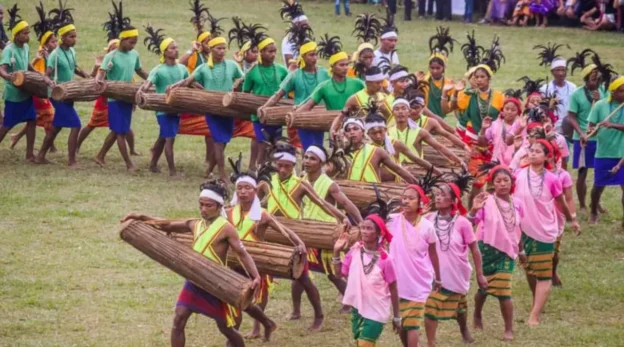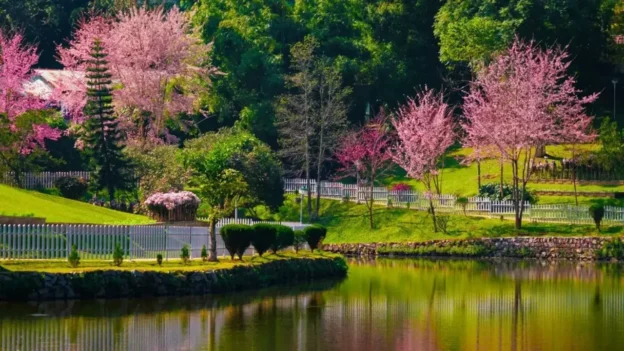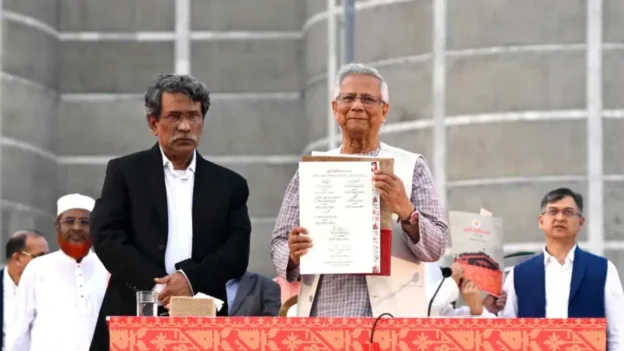The nature of civil-military interaction in Arunachal Pradesh offers a unique perspective on how cooperation between security, governance, and community life interacts in India’s frontier. Arunachal Pradesh is central to India’s national security calculus as it is one of the most strategically sensitive states which has a history of border disputes with China. Yet, the heavy military presence that this strategic importance necessitates has a profound impact on civilian life.
Unlike other border states where militarisation has often generated conflict between armed forces and civilians, Arunachal Pradesh presents a relatively harmonious model of coexistence. Here, a partnership based on collaboration, respect, and mutual reliance has grown between the Indian Army, paramilitary forces, and local populations. This balance has been achieved through sustained efforts on both sides, involving developmental initiatives, cultural engagements, and institutional trust-building over several decades.
A relationship built on trust and cooperation
In the years subsequent to the 1962 conflict, the Army made conscious efforts to improve ties with the people of Arunachal Pradesh. Over time, what began as a purely strategic presence gradually developed into a relationship based on mutual trust. Through continuous outreach, the Army has emerged as both protector and partner.
Initiatives such as Operation Sadbhavana have transformed civil-military relations in significant ways. Under this programme, the Army has organised free medical camps, distributed school materials, built infrastructure in far-flung villages, and offered vocational training to youth. These initiatives are not confined to major towns; they reach the last villages along the Line of Actual Control (LAC), where access to even basic services can be challenging.
During emergencies and natural disasters, the Army often becomes the first responder. Whether airlifting patients from Tuting to Dibrugarh, rescuing people stranded during flash floods in Dibang Valley, or reopening snow-blocked roads near Sela Pass, the response of the defence personnel has consistently demonstrated both discipline and empathy. Such gestures, though rarely documented, sustain the quiet trust between civilians and soldiers.
The Army also relies on local porters since they are familiar with the terrain, including the mountain trails, weather patterns, and shortcuts that maps don’t show. For the villagers, this work provides a steady source of income, while for the Army, it ensures essential logistical support in places where machines cannot reach. The arrangement, born out of necessity, has evolved into a relationship of trust and interdependence.
Connecting the inaccessible
The Indian Army and the Border Roads Organisation (BRO) are mostly responsible for the development of Arunachal’s infrastructure. In a place where the climate and terrain pose major challenges, road connectivity is frequently equated with survival and security. The BRO’s relentless efforts to cut through mountains, build bridges, and maintain roads under challenging conditions have not only improved the state’s strategic mobility but also transformed lives.
The road to Tawang through Sela Pass, the bridges along the Anjaw and Siang valleys, and the infrastructure toward the McMahon Line are testaments to the perseverance of defence engineers and labourers who risk difficult weather and altitude every day. These roads are not just strategic corridors, they are arteries of civilian life, connecting villages to hospitals, schools, and markets. “During winter, when heavy snowfall blocks roads, the Army helps in clearing the road. They also give us a lift,” Tenzing, a resident of Bomdila shared.
The Indian Air Force’s Advance Landing Grounds (ALGs), from Mechuka to Walong and Pasighat, have also become lifelines for civilians. In regions cut off by landslides or snow, the IAF ferries essentials, carries medical emergencies, and sometimes ferries patients in critical condition. The dual-use nature of such facilities reflects the humanitarian dimension of military infrastructure in frontier areas.
Everyday frictions
Life in border districts is characterised by both cooperation and quiet friction. The Army’s presence brings a sense of safety, but it also shapes how people move, work, and live. During a visit to Tawang, I witnessed traffic come to a standstill at a check-gate because an Army vehicle was being towed for repairs. Public vehicles were halted for more than an hour to let the Army convoy pass, as the roads are narrow. Local tourist drivers grew anxious about missing the border-closing time at Bum La and about losing a day’s earnings. “We understand their duty,” a tour operator said, “but sometimes our livelihood depends on reaching on time.” The villagers were agitated, as such incidents of road-clearance have become routine. They recounted an instance when they were made to wait until late at night. Such moments capture the small negotiations that come with living in a militarised landscape.
Land disputes sometimes add to this complexity. In Anjaw district’s Kibithoo Circle, a Meyor family and the Army have long debated compensation for land used for a communication tower. While the project promises better connectivity for both troops and villagers, the family argues that earlier deals were unfair. The Army maintains that it strives for amicable solutions, showing how national security and local rights often intersect on delicate ground.
For herders and farmers, Army protocols are part of daily life. The Brokpa community in Tawang and West Kameng must inform soldiers before moving their cattle to high-altitude pastures. Many see this as necessary for safety, though it sometimes feels restrictive. “Even delays caused by the weather need explanation,” one herder said with a smile, “as if we are guests on our own land.”
Across the border in Tibet, the Mishmi people can see their ethnic kin living in neat, solar-lit villages. “They seem comfortable there,” said a villager from Kibithoo, “sometimes we wonder why we can’t visit freely.” Such reflections remind us that for those who live at the edge of the nation, borders are both real and deeply personal – places where duty, belonging, and everyday life constantly meet.
Community engagement and welfare
The Army’s welfare programmes have a profound impact on the local communities. Regular medical and veterinary camps organised in border villages, tree plantation drives, and educational assistance under the Sadbhavana initiative have fostered goodwill and cooperation. Defence personnel have often volunteered as resource persons, helping students with general awareness, discipline, and national integration activities.
Through recruitment drives and sports events the army has also reached out to the Youth. Football, volleyball, and athletics tournaments sponsored by the defence forces have encouraged young talent from interior districts to participate and connect with the wider world.
The National Integration Tours arranged by the Army for students from border villages, which allows them to visit Delhi, Kolkata, Chandigarh, or Guwahati, have played a subtle but powerful role in building confidence and a sense of inclusion within the national mainstream. For many participants, such exposure is life-changing.
Guardians of peace and partners in progress
In border areas, the Army’s presence provides a sense of security that extends beyond the immediate border. Villagers frequently describe the Army as a “reassuring presence” – one that allows them to live without fear of intrusion or isolation.
Women’s groups often recall how the Army has supported local handloom and handicraft cooperatives by setting up a traditional handcraft skill centre, providing self-powered weaving machines, purchasing their products, or facilitating exhibitions. These small but meaningful interactions contribute to both livelihood generation and cultural preservation.
Today, Arunachal Pradesh serves as an example of civil-military cooperation, with the Army and civil administration collaborating to tackle local issues. Commanding officers and district officials hold regular collaborative meetings to monitor visitor movement near sensitive regions, expedite road projects, and respond to natural disasters.
This coordination was particularly visible during the COVID-19 pandemic, when the Army assisted local administrations by providing logistical support, medical supplies, and transportation in remote border blocks. The seamless collaboration that was shown during that time confirmed how strong institutional trust in the state is.
Respecting local traditions and customs
One of the reasons behind the relatively smooth civil-military relationship in Arunachal is the Army’s sensitivity toward local traditions. Defence personnel posted in tribal areas often take part in community festivals such as Losar, Unying Aaran, or Buddha Purnima, and are warmly welcomed by villagers. In return, locals are frequently invited to Army Day celebrations or flag hoisting ceremonies, where they share meals and songs with soldiers.
This cultural exchange has played a subtle yet powerful role in building a sense of unity. It reinforces the idea that national security and community values are complementary rather than antagonistic.
Towards a secure and inclusive frontier
Arunachal Pradesh continues to serve as an example of how inclusive development and strategic readiness may coexist as India extends the Vibrant Villages Programme and fortifies its border infrastructure. The Army’s role in this process is indispensable, not just as a military force, but as a developmental partner, humanitarian actor, and trusted ally of the people.
Yet, as the state grows and connectivity improves, maintaining this balance will require sustained communication between civilians and the defence establishment. The hallmark of the cooperation lies in dialogue, between the sentry guarding the pass and the villager tending his field, between the officer planning a road and the administration ensuring it benefits all.
The civil-military relationship in Arunachal Pradesh is a story of interdependence built over decades of shared resilience. It is a partnership that has turned the frontier from a zone of isolation into a space of cooperation. In the snowbound posts of Tawang, in the foggy terrains of Mechuka, and along the Siang, this bond continues to hold, quietly, resolutely, and with mutual respect. In the words of Lobsang from Tawang, “We feel safe in the presence of Army. They are very helpful.”


